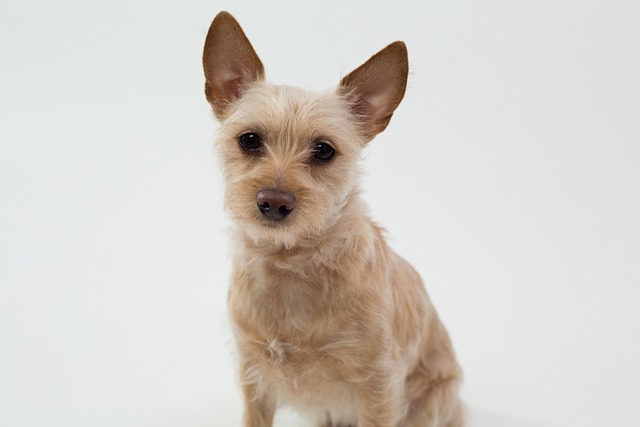
How can I tell if my dog's heatstroke is serious
Let’s be real: It’s a sticky August morning in Los Angeles, and you took your 2-year-old Golden Retriever, Max, for a walk a little later than usual
Assistance dogs aren’t just pets—they’re partners, trained to step in when daily life gets tough. But what makes a dog excel in this role? It’s not just about size or breed reputation; it’s about temperament, focus, and that unshakable desire to connect with their person. Some breeds have a knack for it, honed by years of working alongside humans, but at the end of the day, it’s the individual dog that truly shines.
Labrador Retrievers often top the list, and it’s easy to see why. They’re smart, eager to please, and have a calmness that’s hard to ruffle—perfect for staying focused in busy crowds or stressful situations. Whether guiding someone with low vision, alerting to a medical episode, or helping with mobility, Labs adapt. Plus, their medium size hits a sweet spot—sturdy enough to fetch a dropped item or steady a wobbly step, but not so big they’re cumbersome in tight spots like grocery stores or buses.
Golden Retrievers bring similar traits to the table, with a dash of gentleness that makes them standout for kids or folks with anxiety. They’re intuitive, picking up on subtle changes in their person’s mood or body language. A golden might nudge a hand to remind someone to take medication, or lean in for a calming cuddle during a panic attack. Their trainability is off the charts, and they thrive on routine—key for sticking to the consistent tasks that make assistance work effective.
 German Shepherds are another breed that excels, especially in roles requiring strength or protection. They’re fiercely loyal, which translates to a laser-like focus on their handler’s needs. Whether pulling a wheelchair, alerting to oncoming seizures, or assisting with balance, their muscle and intelligence make them powerhouses. They need plenty of mental and physical exercise, but that drive to work is exactly what makes them reliable—they don’t quit until the job’s done. Just remember, their protective instincts mean early socialization is a must, ensuring they stay calm around strangers and other animals.
German Shepherds are another breed that excels, especially in roles requiring strength or protection. They’re fiercely loyal, which translates to a laser-like focus on their handler’s needs. Whether pulling a wheelchair, alerting to oncoming seizures, or assisting with balance, their muscle and intelligence make them powerhouses. They need plenty of mental and physical exercise, but that drive to work is exactly what makes them reliable—they don’t quit until the job’s done. Just remember, their protective instincts mean early socialization is a must, ensuring they stay calm around strangers and other animals.
Smaller breeds shouldn’t be overlooked. Poodles, especially Standard Poodles, combine smarts with hypoallergenic coats, a boon for handlers with allergies. They’re quick learners, mastering complex tasks like retrieving specific items or turning lights on and off. Even Miniature Poodles find their niche, often working as hearing dogs, using their sharp ears to alert to doorbells, smoke alarms, or a name being called. Their size makes them great travel companions, fitting easily under airplane seats or in small apartments without sacrificing capability.
It’s important to note that not every dog of these breeds will make a great assistance dog—and some amazing helpers come from mixed breeds or unexpected backgrounds. Rescue dogs, for example, often bring a level of gratitude and devotion that’s hard to match. What matters most is the training, which can take 18 months to two years, covering everything from basic obedience to specialized tasks.
The best assistance dog is the one that clicks with their person. It’s the Lab that knows exactly when to slow down on a walk, the Golden that senses a migraine before it hits, or the Shepherd that stands steady through a crowded mall. They’re more than helpers—they’re freedom, wrapped in fur and a wagging tail.

Let’s be real: It’s a sticky August morning in Los Angeles, and you took your 2-year-old Golden Retriever, Max, for a walk a little later than usual

You're enjoying a summer afternoon at the park when you notice your dog has stopped panting and appears disoriented - their gums are bright red

Let’s paint the picture: You’re in your Denver apartment, watching your 4-year-old Boston Terrier, Ruby, plop down mid-play session with her favorite toy

Many dog owners notice their pets nails seem shorter after regular walks,but how much does this daily activity actually help?The answer depends on where you walk—concrete sidewalks or asphalt streets gently file nails as a dog's paws hit the ground

Most dog owners notice their pup scooting across the carpet at some point, but few connect it to impacted anal glands. These small sacs near a dog’s rectum secrete a scent for marking territory

Most vets agree that regular dog teeth cleaning is key to avoiding painful dental issues later. For healthy adult dogs, a professional cleaning at the vet’s office every 12 to 18 months usually works well.